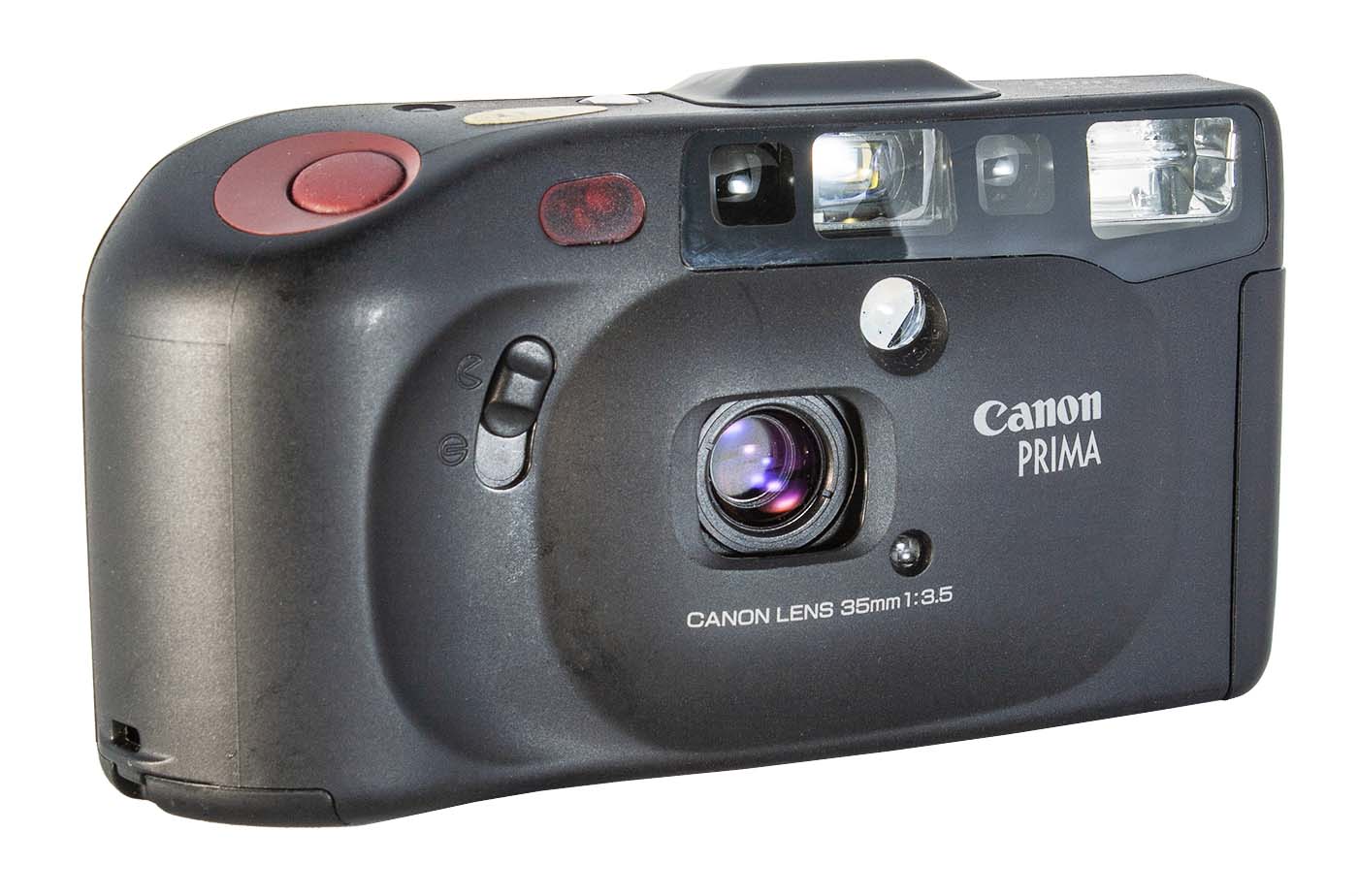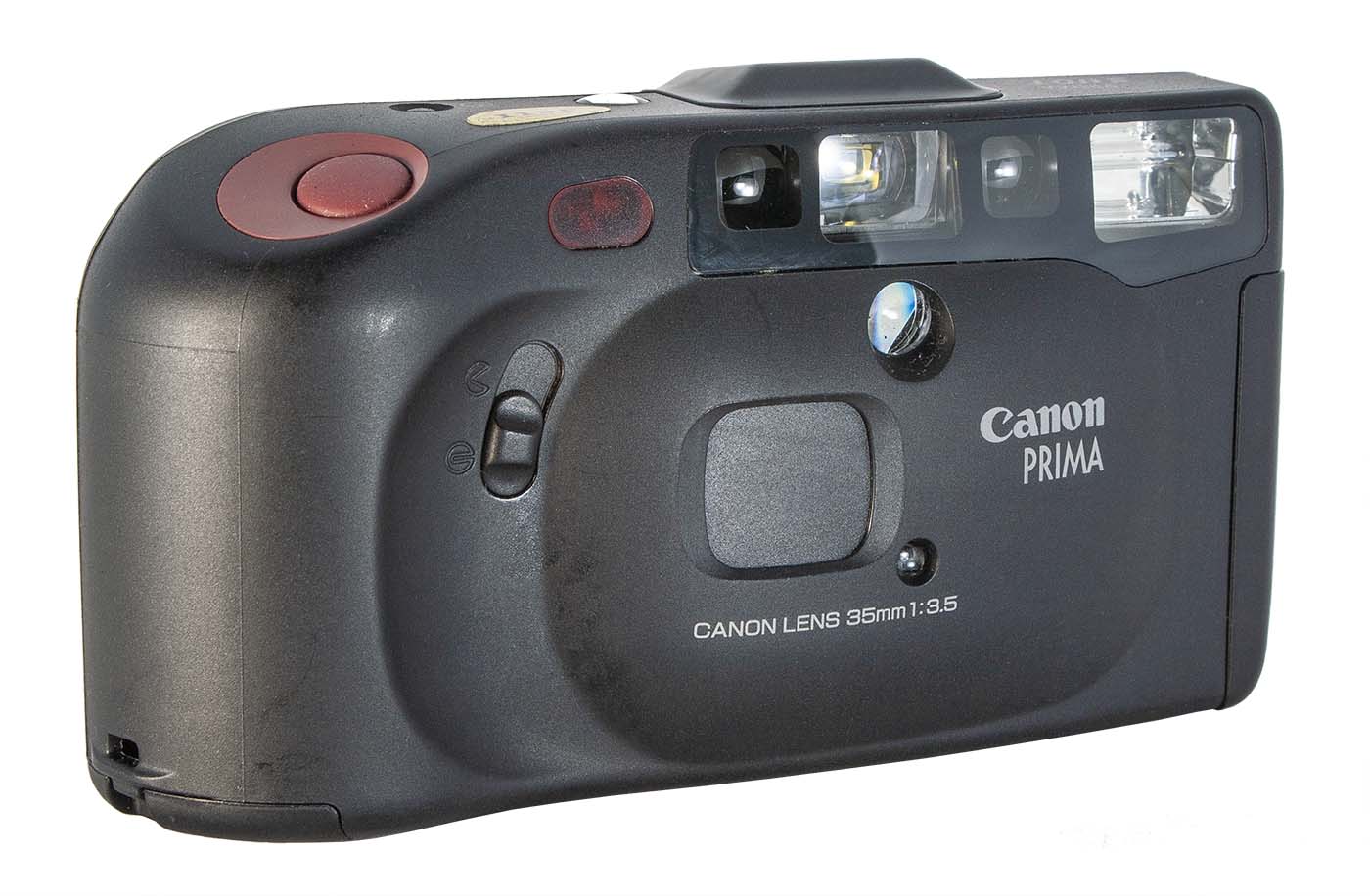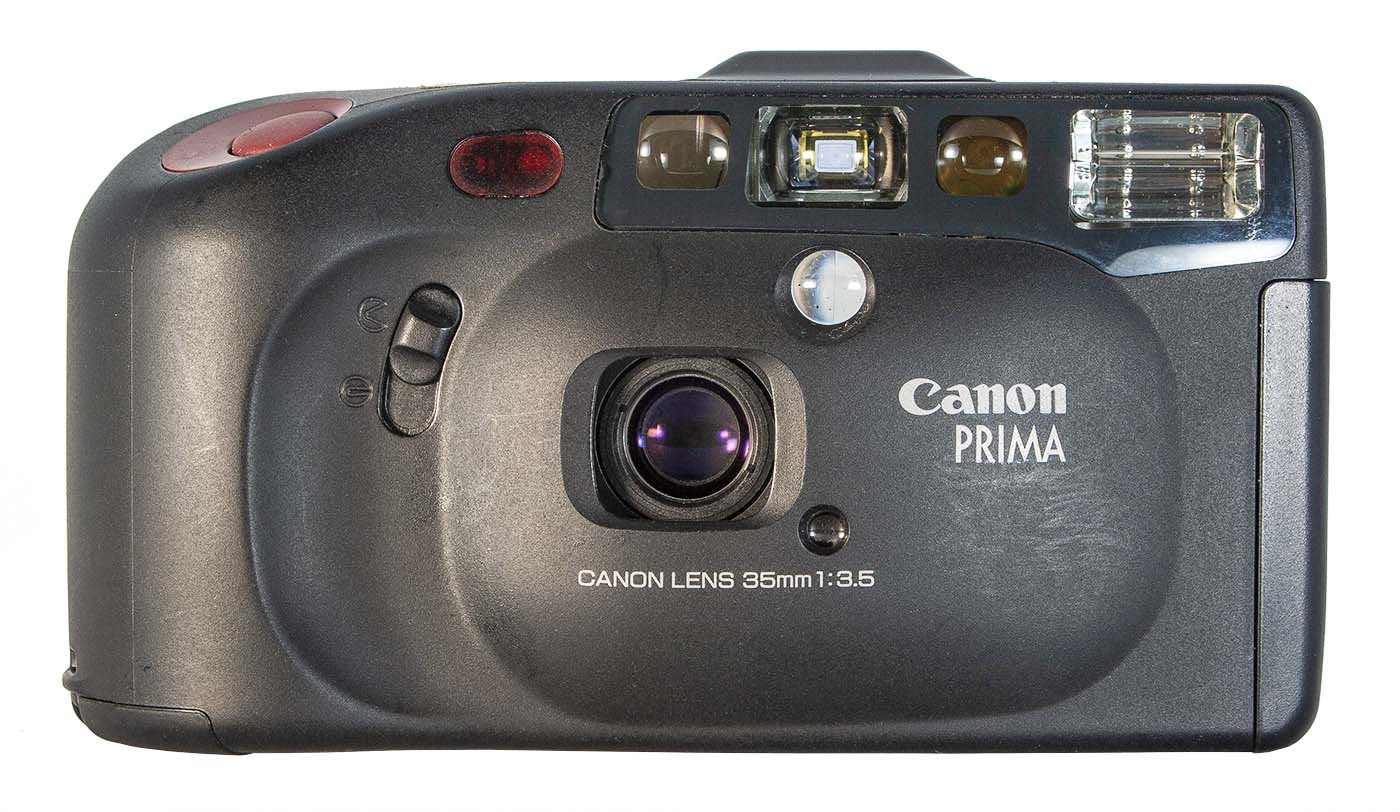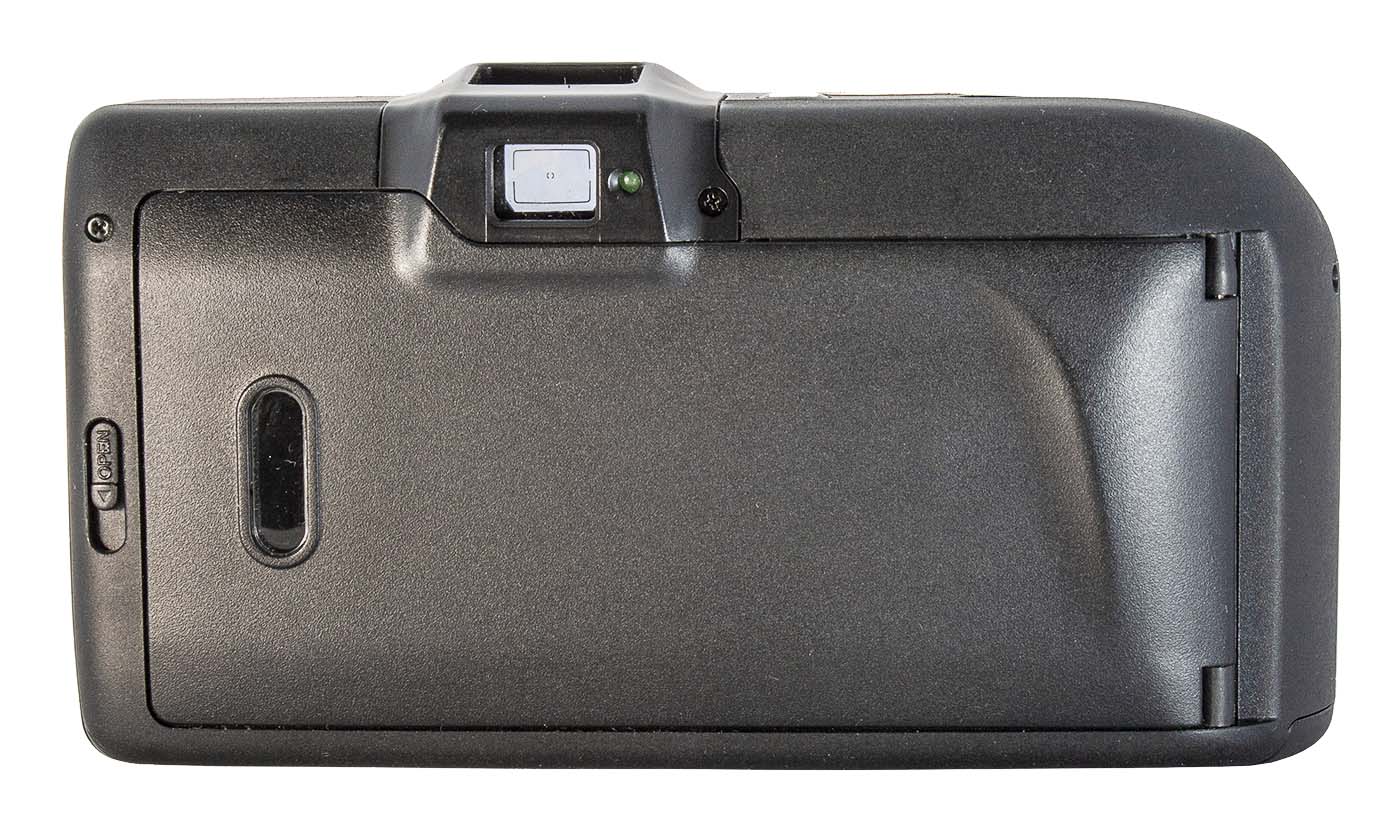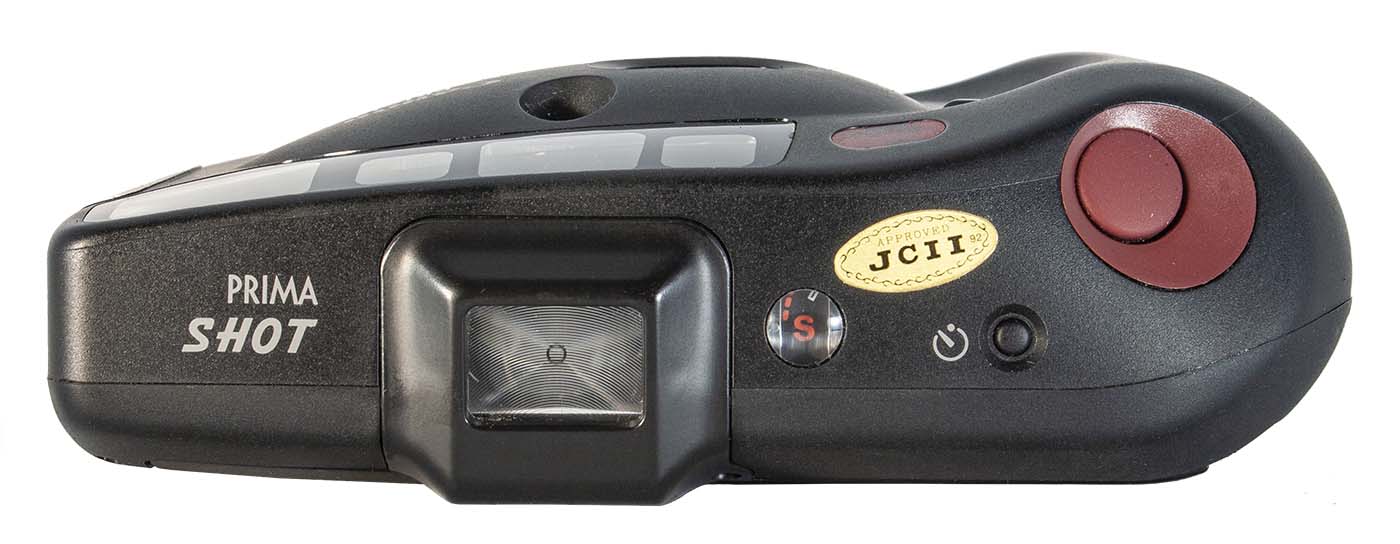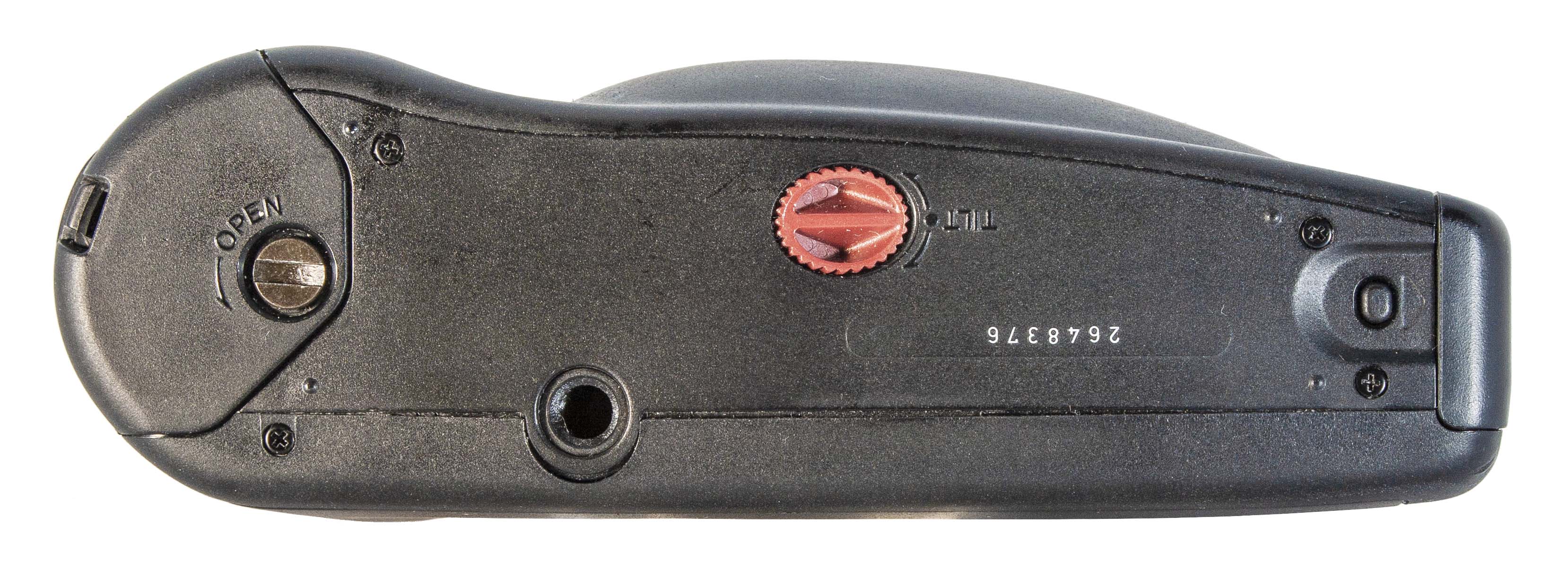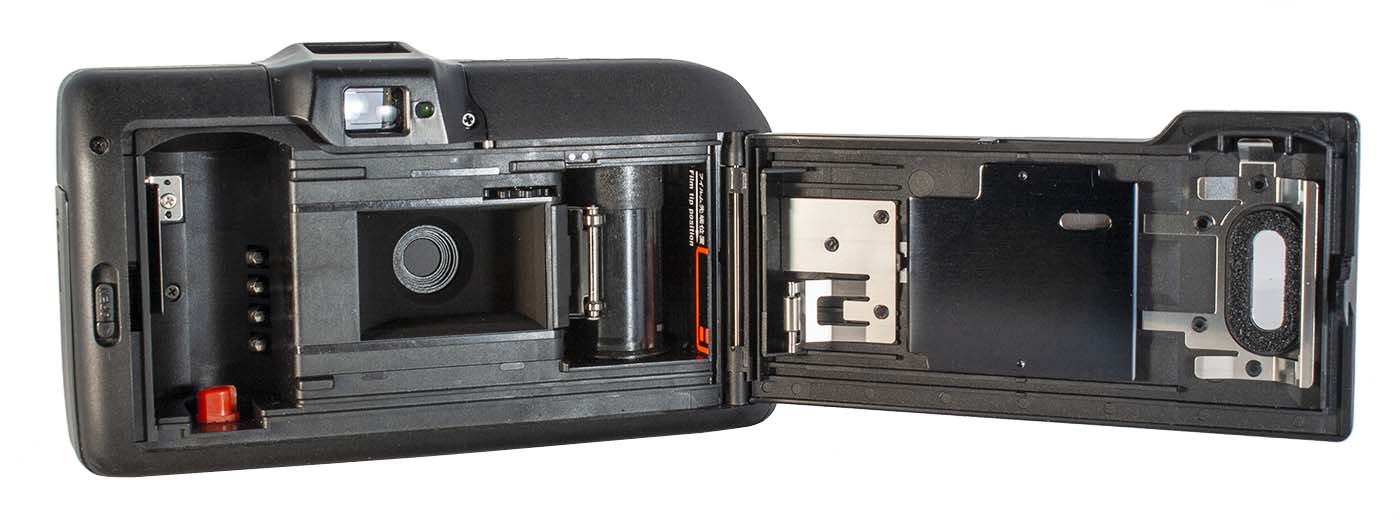This is the Canon Prima Shot which is the same camera as the Sure Shot Ace or Autoboy Prisma.
Here the lens cover is employed using the switch just to the left of the lens opening. The opening to the right bottom corner of the lens opening is the light meter sensor. The large opening on the upper right corner is the lens for the prism view finder described in the text.
The built in flash is in the upper right corner of the camera body beside the viewfinder window. The range finder sensor windows are grouped with the viewfinder window.
The clean lines of the back attest to the lack of features in this camera generally.
Sure Shot Ace
or Prima Shot or Autoboy Prisma
The Sure Shot Ace is Canon’s ninth camera released in the Sure Shot series of Point and Shoot film cameras. Introduced in October of 1988 it came with some new and interesting features.
The lens is a 35mm f/3.5 prime with three elements in three groups. The shutter, which is automatically electronically controlled between 1/40th and 1/125th second, cannot be set manually.
Film speed is set from the DX Code on the film can to anything between 25 and 1600. If film without a DX Code, such as hand rolled film, is used the camera defaults to ASA 25. There is no way to set the ISO manually. In this case you have to add your own coded label to the can. I wrote about how to do that some time ago.
There is no way to set shooting modes as there is on later Sure Shot cameras. This camera is fully automatic. The only real control is the shutter button.
The first unique feature of this camera is the viewfinder in the top deck. This viewfinder uses a separate lens in the front of the camera and a prism to direct the image up to the eye of the photographer. This fact explains the name of the camera in Japan: Prisma.
Sure Ace User Manual
This manual is assembled from several sources none of which were complete. Only the English portions of this multi-language manual are include accounting for the odd page numbering.
There are no functions implimented on the bottom plate other than the tripod mount, if that is a function.
The second unique feature is the inclusion of a built in remote shutter trigger. At the left end of the camera is a piece of the camera that looks like a door latch but if you try to open it the end of the camera comes off and reveals a red button on the inside of the remote. This small device can send out an IF beam that can trigger the camera shutter: common now but not so much then. In fact it was one of the first, if not the first, such trigger.
The camera requires a 2CR5 battery to power it and the remote takes two 3 volt CR1220’s stacked with positive terminals facing towards the circuit board.
The left end has what looks like a door but when you attempt to open it the left end of the camera detaches.
My copy of the Canon Prima Shot, which is the Canon Sure Shot Ace, (Ser. #2648376 Collection #C285) was acquired in January of 2019 from the Vancouver Flea Market on Terminal Avenue. It appears to be fully operational but I have not tested it with film.
Eventually I will get around to taking my Prima Shot out for a walk and when I do I will update this post with pictures from the camera.

